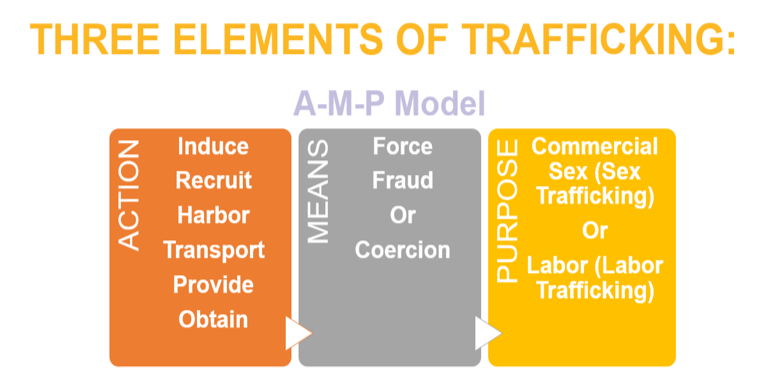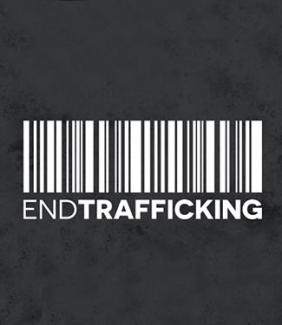by Karen Romero, Freedom Network Training Institute Director
What Is Human Trafficking
The issue of human trafficking has gained tremendous attention over the last two decades. The relatively new “popularity” of this crime has provided needed protections for survivors and resources for victim service providers in the field, however it has also allowed for misconceptions. Similar to domestic violence and sexual assault, human trafficking can affect any individual regardless of age, gender, sexual orientation, gender-identity, religion, citizenship or immigration status or nationality. Still, it is important to acknowledge that some (or populations) individuals can have heightened vulnerabilities to trafficking. The crime of human trafficking is at its core a human rights violation, exploiting an individual for economic gain. Communities that are poor, disenfranchised, and underserved are often the most vulnerable.
There are three elements in the federal definition of a survivor of human trafficking which is often referred to as the A-M-P model. It includes an action on the part of the trafficker, means or type of exploitation, and purpose for the trafficker to gain financially. Trafficking requires at least one element from each section of the A-M-P model. In the case of sex trafficking of minors under the age of 18, a means (force, fraud, or coercion) is not necessary, federal law presumes that all minors engaged in commercial sex are eligible for benefits and services for human trafficking survivors under the TVPA.


The Numbers
Numbers and statistics around human trafficking are highly valued yet often inconsistent and misinterpreted. Because human trafficking is underreported and under-identified, there is no clear figure as to how many people are trafficked worldwide or in the US. Since not all victims of trafficking have access to services or have reported their situation, numbers reported show but a fraction of those impacted. US Department of Justice grantees reported serving 8,003 clients during the 2016-2017 year period.2 However, we do know that trafficking happens in every state and can occur in any industry such as education, manufacturing, agriculture, and domestic work among others. We also know that labor trafficking is very common, but often remains under-identified, and labor trafficking survivors are underserved.
Polyvictimization
Survivors of human trafficking often have experienced multiple traumas and other types of crimes. Survivors may have experienced child abuse, family violence, domestic violence, sexual assault and/or exposure to community violence. More often than not, individuals who are trafficked know or have some relationship with their trafficker. In some cases, it could be a romantic relationship in which they have experience both domestic violence and human trafficking; while others have an employer-employee relationship. Additionally, survivors of sex trafficking have, almost without exception, experienced sexual assault through their victimization. Although it is important to have legislation and services that support each type of victimization, it’s also important to realize that not every case is cut and dry. There is overlap in the victimization and experience of survivors, and as victim services providers we can have the most impact through collaboration. As we look to provide the most effective response, it’s helpful for us to keep in mind that partners in our community can help provide a holistic response.
The Role of Domestic Violence Advocates
As a partner in the domestic violence field you will likely come across survivors of trafficking, especially with the high incidence of polyvictimization. Being aware of the complexity of the backgrounds and needs of survivors will help advocates successfully meet their individual needs. Collaborating and partnering with local anti-trafficking organizations will allow for a more seamless referral process. Each field and organizations have unique and specialized
services that could be beneficial to survivors. Domestic violence programs often have access to emergency and transitional housing programs that survivors of trafficking urgently need. Anti-trafficking programs often have specialized social services and legal services in house or through a referral network. By having an ongoing collaboration, domestic violence programs can refer clients that they believe have experienced trafficking to programs that can meet trafficking-specific needs, such as applying for a T Visa, accessing assistance for food, shelter, and transportation through federal programs that are available to citizens and foreign nationals. As advocates connect with providers throughout our local community and state, it will expand the safety net that survivors of violence have and will provide a holistic and informed approach.
Common Needs of Trafficking Survivors
Survivors of human trafficking typically need emergency and long-term services. Survivors most commonly identify housing, employment, and legal services as their most immediate needs after exiting the trafficking situation. These needs are interrelated. If a survivor does not have safe and stable housing, it will be difficult for them to secure a job. Additionally, with legal issues such as immigration and criminal convictions, trafficking survivors may be excluded from housing and work opportunities, until they receive some form of immigration relief. Such relief may include a T Visa, where applicable, or expungement of their criminal record for crimes tied to their trafficking situation. Anti-trafficking programs have the ability to connect survivors to assistance and resources specific to the trafficking situation, such as the Trafficking Victim Assistance Program. By being connected to your local anti-trafficking program you can get to know the services that are offered and make referrals that will benefit the survivor you are working with.
Resources
The topics of human trafficking can feel overwhelming. However, there are resources to help you understand the topic and obtain tools to better serve trafficking survivors. To learn more about human trafficking visit freedomnetworkusa.org and access our Resource Library to find practical videos, fact sheets, tools, and reports on human trafficking. Legal service providers may find the Meeting the Legal Needs of Human Trafficking Victims: an Introduction to Domestic Violence Attorneys & Advocates to be a helpful resource. We encourage service providers in the domestic violence field to connect with a local anti-trafficking organization and learn more about the services they provide. To connect with Freedom Network USA you can email training@freedomnetworkusa.org.
1 US State Department https://www.state.gov/j/tip/laws/61124.htm
2 US Department of State, Trafficking in Persons Report 2018, page 445














